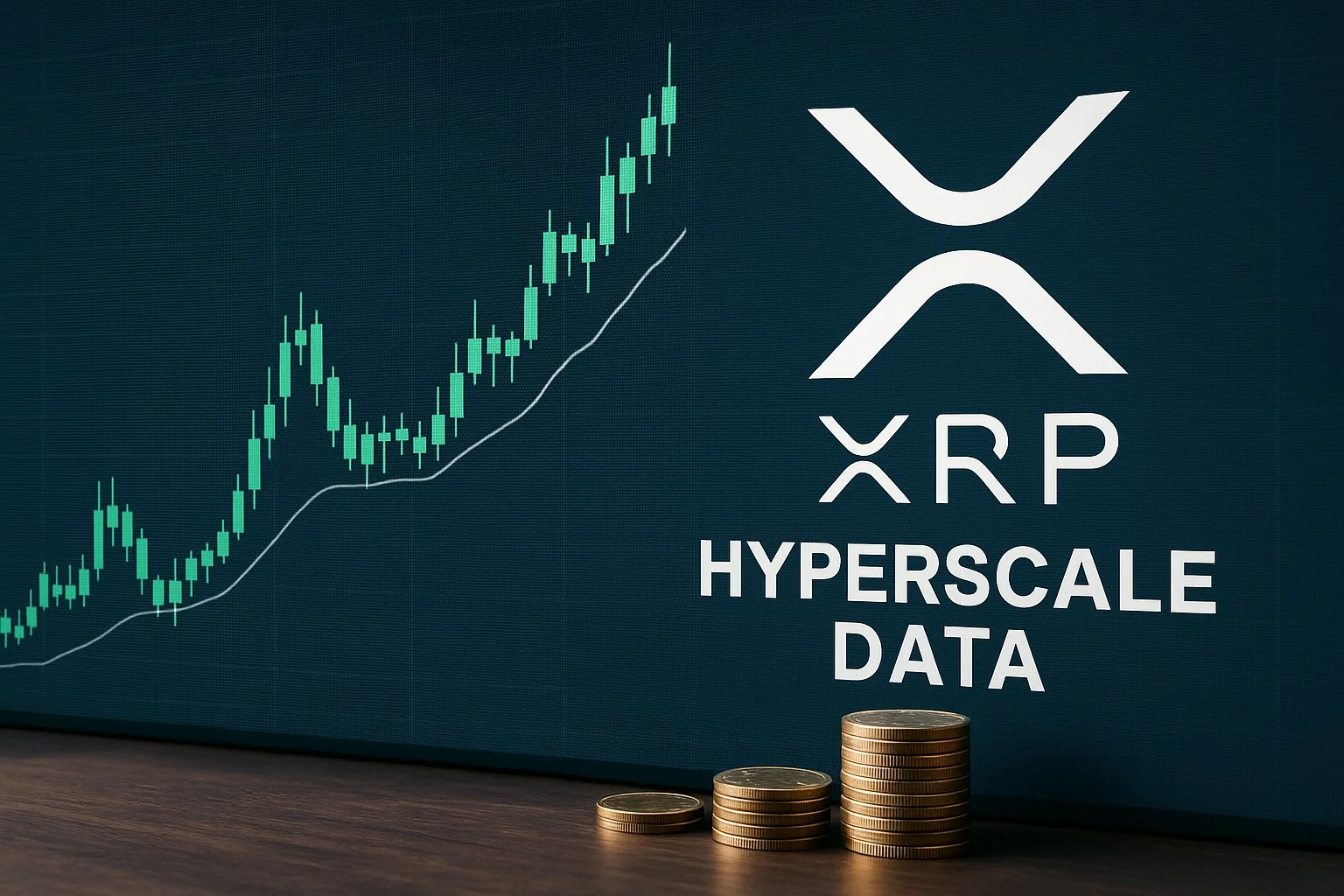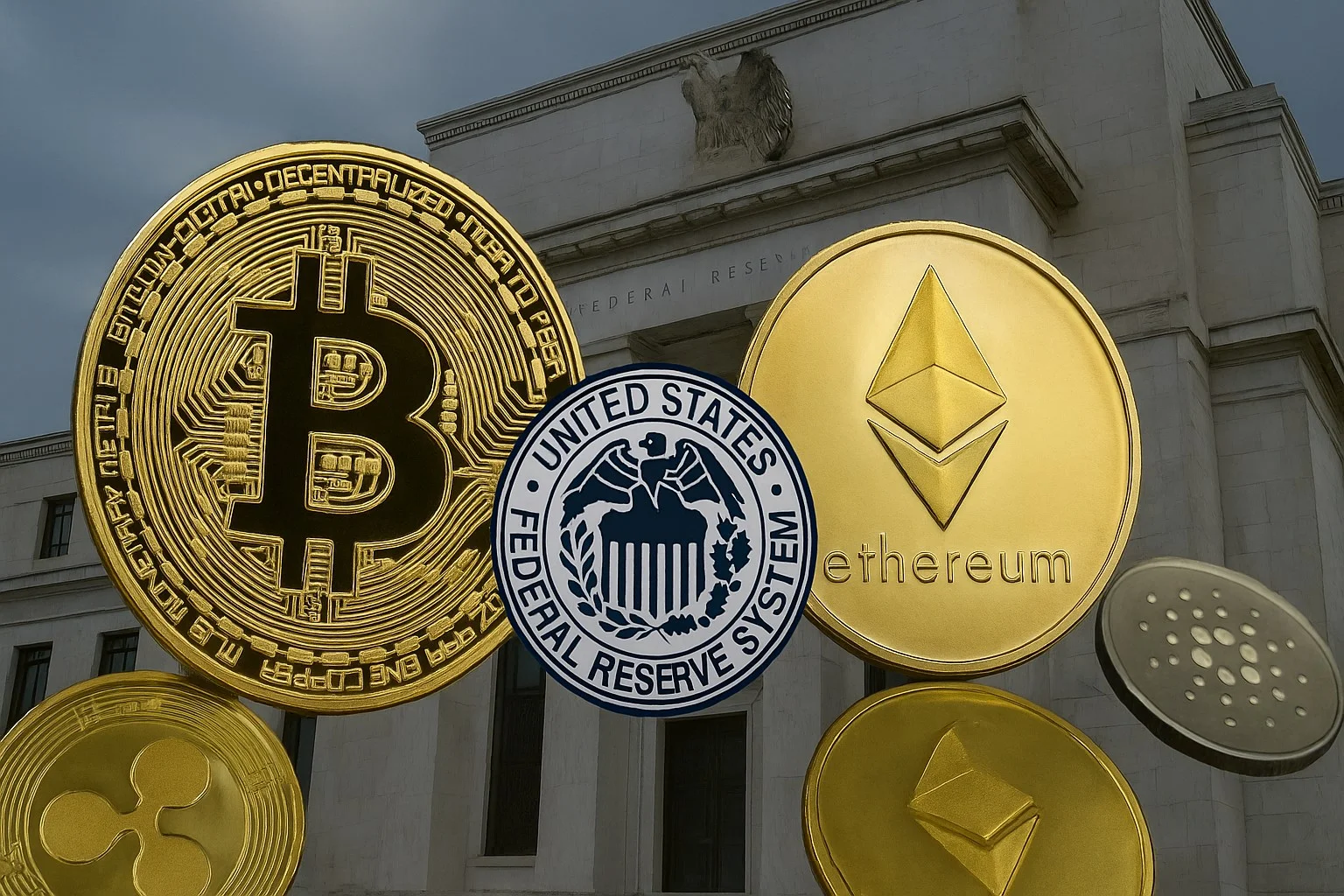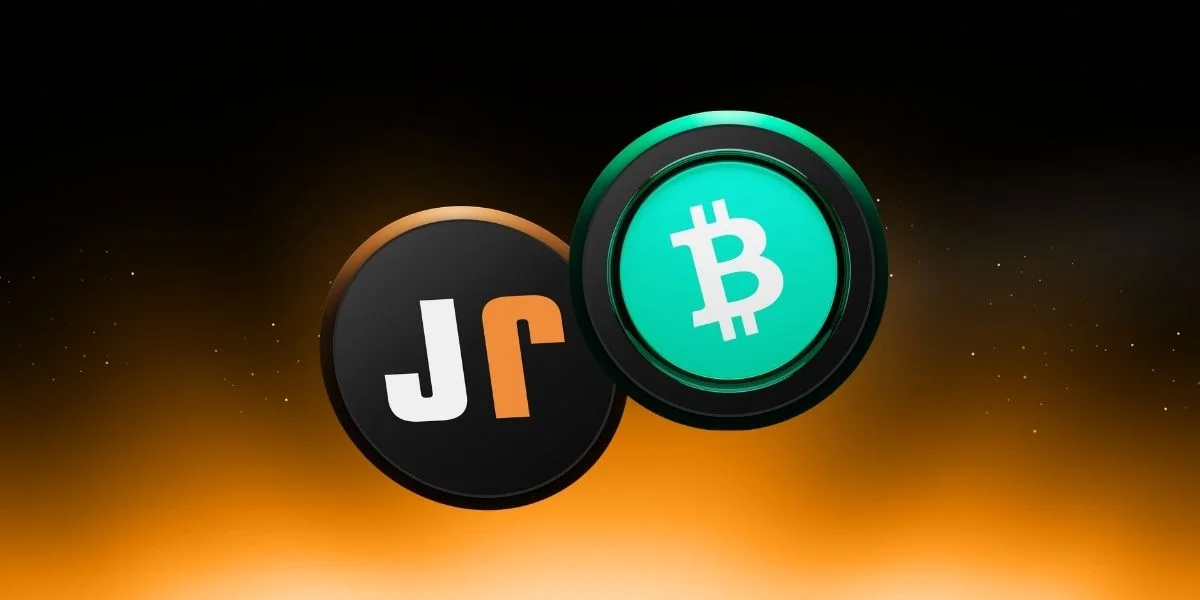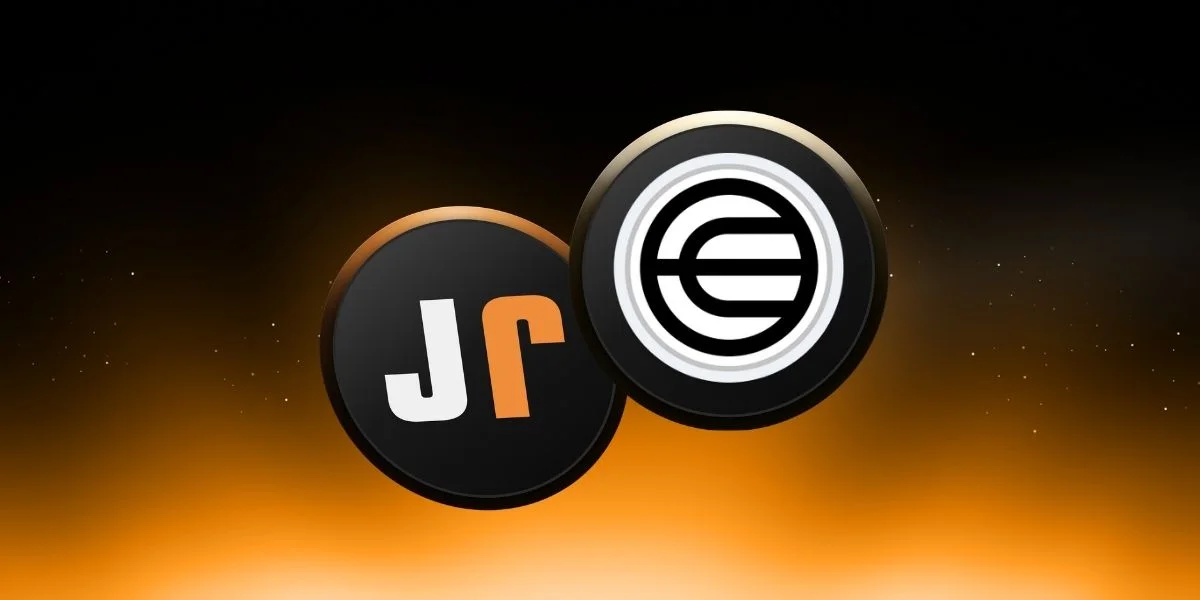News
Altcoin News
Altcoin News
Browse all Altcoin related articles and news. The latest news, analysis, and insights on Altcoin.
SEC Postpones Trump's Bitcoin ETF Until September: INJ and SOL ETF Applications on the Table
The U.S. Securities and Exchange Commission (SEC) has postponed its decision on the Truth Social Bitcoin ETF, filed in June by Trump Media & Technology Group. This ETF, offered by the company, which operates the Truth Social platform, aims to offer investors direct exposure to Bitcoin through a publicly traded fund structure.In a statement, the SEC stated that it needed more time to evaluate the proposed ETF and announced that the review period has been extended until September 18th. The agency's official statement read, "The Commission has determined that a longer period is appropriate to consider the proposed rule change and the issues it raises."The Truth Social Bitcoin ETF is just one of many noteworthy crypto products recently being offered to the U.S. market. However, the primary reason this fund stands out is its direct connection to former U.S. President Donald Trump. Trump frequently posts on Truth Social and has not been shy about publicly expressing his interest in digital assets. Besides the Truth Social Bitcoin ETF, other Trump-linked crypto ventures are also showing a notable increase. Various meme coin projects bearing Trump's name are gaining market share, while World Liberty Financial, a DeFi project allegedly backed by figures close to the Trump family, is also making headlines.The SEC's cautious approach continues: Applications also received for INJ and SOLThe SEC's cautious approach to ETF applications is noteworthy. The commission is meticulously reviewing ETF applications related not only to Bitcoin but also to leading tokens like Ethereum and Solana. The regulator prioritizes investor protection while fostering innovation. This balancing act often leads to lengthy decision-making processes. On the same day, Cboe BZX also filed a formal application with the SEC for the Canary Staked INJ ETF, which will track Injective's native token, INJ. Canary Capital Group, the ETF sponsor, first introduced the product earlier this month. On the same day, an application was also submitted for the Solana ETF, developed in partnership with Invesco and Galaxy.

CoinShares Launches ETP for SEI! Will Trade on Swiss Stock Exchange
CoinShares, one of Europe's leading crypto asset management companies, has launched a new exchange-traded product (ETP) offering investors direct access to the Sei (SEI) token. This product, which will be traded on the SIX Swiss Exchange under the ticker symbol "CSEI," stands out for its management-free nature and its 2% annual automatic staking return.The new ETP is physically backed by SEI tokens and offers investors the opportunity to directly invest in SEI's Layer-1 blockchain infrastructure. With this move, CoinShares aims to eliminate the custody and operational challenges previously faced by institutional investors seeking access to SEI.A European First: Regulated Access to SEIWith the launch of this product, CoinShares has launched the first regulated investment vehicle for the SEI token. The Sei network, characterized by high speed and low latency, is a Layer-1 blockchain designed specifically for applications requiring real-time transactions, such as decentralized exchanges (DEXs), derivatives protocols, and Web3 game projects.CoinShares, with a digital asset management portfolio exceeding $8 billion, is one of the largest players in the European crypto investment space. The company recently became the first crypto asset manager in Europe to receive a Markets in Crypto Assets (MiCA) license, providing a strategic advantage in the expansion of such products. Thanks to CoinShares's European licensing network, the new ETP is accessible through a passport system in many countries.ETPs are growing, but lagging compared to the USWhile dozens of ETPs like SEI exist in Europe offering crypto asset investments, adoption of these products is not as widespread as spot Bitcoin ETFs in the US. According to JustETF data, there are a total of 108 crypto ETPs in Europe, with total assets under management of approximately €13.92 billion ($16.21 billion). In contrast, BlackRock's IBIT product alone has over $86 billion in net assets. The total net asset value of spot Bitcoin ETFs in the US exceeds $151.4 billion. This difference highlights the fact that crypto investment vehicles in Europe have not yet entered the mainstream.CoinShares' Strategic MoveThe new SEI-based ETP, with both staking returns and zero management fees, is seen as a step that strengthens CoinShares' focus on institutional investors. The company aims to increase its market share by offering investment opportunities in a regulated framework, particularly for growing projects that stand out with their fast transaction capabilities.The SEI token is trading at $0.33306153, according to market data. At the time of writing, the coin is down 3 percent. However, it traded at a daily high of $0.34.

US-Based Company Boosts Share Price with XRP Purchases
US-based data center and cryptocurrency mining company Hyperscale Data (GPUS) saw its shares surge by up to 12% after officially announcing its XRP investment. The company confirmed the implementation of its previously announced $10 million XRP investment strategy, generating significant excitement among investors.XRP investment made officialThe statement stated that Hyperscale Data sees XRP as a scalable digital infrastructure for cross-border value transfer. The company's Chairman, Milton "Todd" Ault III, described XRP as "a fundamental asset in the evolution of the global financial ecosystem," emphasizing that the company aims to have a say not only in the digital asset space but also in the global financial future with its XRP investment.Hyperscale Data announced that it will update its XRP purchases weekly and publish regular reports starting August 12, 2025. These reports will include the company's weekly digital asset purchases and sales and the total amount of XRP on its balance sheet. The company describes this regular transparency initiative as part of its long-term XRP accumulation strategy.36-month lockup period on the agendaAccording to the company's statement, an increase to the $10 million investment cap is also on the agenda, depending on current market conditions and financing opportunities. Furthermore, the possibility of locking up purchased XRP for 36 months is also being internally evaluated. This lockup period will be linked to the company's long-term goals and specific internal milestones. Milton Ault III commented on this strategy:“We see the future of energy demand in the fields of artificial intelligence, data centers, and crypto assets. In this context, we are positioning XRP not only as a technological but also as a financial core asset. We want to build a balance sheet that represents the infrastructure and financial system of the future.”Shares surgeFollowing the investment announcement, Hyperscale Data's GPUS shares rose by as much as 12% intraday, from $0.73 to $0.82. At closing, the share price was $0.7835, a 6.8% increase on a daily basis. The company did not specifically attribute this increase, but the XRP purchase and the weekly transparency initiative are considered significant developments that boost investor confidence. Hyperscale Data operates through its subsidiary, Sentinum Inc., which provides digital asset mining and high-performance computing infrastructure. It also has investments across various sectors through Ault Capital Group (ACG). However, the company plans to separate from ACG at the end of this year to focus solely on data center operations. The XRP purchases are also seen as part of this transformation. At the time of writing, the XRP price is trading at $3.17, a 2% decrease.

What is Bitcoin Cash (BCH)?
Bitcoin Cash (BCH) is a digital currency frequently mentioned in the cryptocurrency world, but often raises the question, "Is it a copy of Bitcoin or a completely different vision?" So, what is Bitcoin Cash, and why is it so talked about? Born in 2017 as a hard fork of the Bitcoin blockchain to provide an alternative solution to existing problems as a result of disagreements within the Bitcoin community, BCH has been determined to forge its own path ever since. Noted for its low transaction fees, large block sizes, and speed-oriented structure, Bitcoin Cash strives to maintain the ideal of a "peer-to-peer electronic cash system."So, what does Bitcoin Cash do, and what are the technical and philosophical differences that distinguish it from Bitcoin? In this comprehensive guide, we will examine many interesting topics, including what is Bitcoin Cash, what is the BCH coin, when was Bitcoin Cash released, how did the BCH hard fork process work, who owns the BCH coin, who are the key figures supporting the project, and how is the future of BCH coin shaping up. The Definition and Origins of Bitcoin CashBitcoin Cash is a cryptocurrency that entered our lives on August 1, 2017, with a hard fork of Bitcoin (BTC). In fact, its emergence stems from one of the most heated debates in the crypto world: Is Bitcoin scalable, or has it reached its limit? As the Bitcoin network grew more users, transaction times began to lengthen and fees increased. Then, disagreements erupted between developers and miners. Some said, "Let's increase the block size to over 1 MB and process more transactions faster." Others said, "No, let's handle this without scaling up the chain, with updates like SegWit or second-layer solutions like the Lightning Network." It was at this point that the community split in two, and a new chain emerged: Bitcoin Cash. This event, known as the Bitcoin fork, was the turning point that gave birth to BCH. BCH's main goal is to essentially increase the block size, allowing it to confirm many more transactions faster and more cheaply. Initially, this block size was set at 8 MB, but over time, it was increased to 32 MB as needs increased. By comparison, Bitcoin's block size is still around 1 MB (effectively increasing to 4 MB with SegWit), falling well short of BCH's capacity. If you're wondering what this means, Bitcoin Cash can cram thousands more transactions into a block; tests have even shown that a single BCH block can process up to 25,000 transactions. In Bitcoin, this number is generally limited to around 1,000–1,500. This means that no matter how congested the network, Bitcoin Cash has the potential to provide transaction confirmations with low fees and no waiting times. BCH fork and subsequent change in block sizes. Source: Coin98 Bitcoin Cash was originally conceived as a step toward remaining true to the famous vision put forth by Bitcoin founder Satoshi Nakamoto in 2008: a "peer-to-peer cash system." Satoshi's original whitepaper defined Bitcoin not as an investment instrument, but as digital cash that could be used directly for daily payments. Over time, Bitcoin (BTC) adopted a more "digital gold" identity, meaning people began using it not as a payment instrument but as a long-term store of value. This is precisely where BCH supporters stepped in, saying, "No, Bitcoin's primary purpose should be to be a part of everyday life and be used for payments." Therefore, Bitcoin Cash chose to scale the chain itself and process more transactions directly within blocks. This is where the difference between BCH and BTC becomes clear: BTC prefers to proceed with small blocks and external scaling solutions, while BCH aims to directly scale on-chain transactions with larger blocks. Thus, BCH is positioned as a "cash payment system" that anyone can easily use when buying coffee, sending money to a friend, or making an e-commerce purchase. We can take a look at the key differences between Bitcoin and Bitcoin Cash in the following table:FeatureBitcoin (BTC)Bitcoin Cash (BCH)Block Size1 MB (effectively ~4 MB with SegWit)32 MBBlock Time~10 minutes~10 minutesTransaction Capacity~7 transactions/sec~100–200 transactions/sec (theoretically higher)Average Transaction Fee1–10 USD (can be much higher during congestion)0.001–0.01 USDCongestion During High LoadHigh (fees increase rapidly)Low (large blocks absorb transaction load)Micro Payment SuitabilityLimited (high fees make small payments impractical)Suitable (low-cost transactions possible)Layer-2 RequirementRequires Lightning NetworkOn-chain capacity is generally sufficientBitcoin Cash History: Major MilestonesWhen did Bitcoin Cash launch? This question is often one of the first asked by curious investors. The short answer is: August 1, 2017. That day, the Bitcoin network experienced a major fork, and Bitcoin Cash launched its own chain. But this was only the beginning. Since then, BCH has faced many challenging challenges, not only technically but also in the community; forks, disagreements, and updates have accumulated a rather eventful history. Now, let's take a look at the significant milestones that have emerged since Bitcoin Cash's launch:2017: Bitcoin Cash split from Bitcoin on August 1, 2017, to create its own chain. As a result of this split, everyone who had held Bitcoin up until that point held an equivalent amount of BCH. Miners who produced the first blocks included major mining pools and players like Bitmain. BCH traded at around $240 on its first day of release.2018: In November 2018, the Bitcoin Cash protocol experienced a second major fork. This fork resulted in the Bitcoin Cash network splitting in two, resulting in the emergence of a new cryptocurrency called Bitcoin SV (Satoshi's Vision). Bitcoin SV was the product of a faction led by individuals like Craig Wright, aiming to further increase the block size. With this split, two separate projects, BCH and BSV, continued.2020: In November 2020, the community was once again divided by the Infrastructure Funding Plan (IFP) debate. Bitcoin Cash's lead development team, Bitcoin ABC, proposed implementing a controversial rule (known within the community as a "miner tax") that required 8% of mining rewards to be allocated to developers. However, the majority of the community and other developer groups (such as Bitcoin Cash Node) opposed this proposal. As a result, the network forked again, leaving the remaining minority Bitcoin ABC chain, BCHA (later rebranded as eCash (XEC)). The main BCH chain continued its work without the IFP rule.2021–2023: After the 2020 split, Bitcoin Cash's developer community, although smaller in size, continued to work on the project. During this period, the protocol continued to be improved through routine network updates that occurred twice a year. In particular, improvements to increase transaction confirmation speed and the infrastructure for new features were discussed. Despite the decrease in the number of developers, existing teams continued to work to keep BCH current and increase its adoption.2024: With the protocol upgrade in May 2023, CashTokens were added to the Bitcoin Cash network. This update significantly increased BCH's compatibility with decentralized finance (DeFi) applications by 2024. CashTokens allowed developers to issue new tokens and develop smart contract-like solutions on the Bitcoin Cash blockchain, similar to the ERC-20 standard on Ethereum. So, what are CashTokens? In short, this is the name of this update that adds the ability to issue new digital assets (tokens) and basic smart contract operations to the Bitcoin Cash protocol. Why Is Bitcoin Cash Valuable?The factors that make Bitcoin Cash valuable stem from its technical features and usage advantages. It would be a serious mistake to see it merely as a "clone" of Bitcoin. On the contrary, Bitcoin Cash has a very clear purpose and strong technical features that support this purpose. Let's take a look at Bitcoin Cash's features and advantages. Why do some users still prefer it to BTC for daily payments? Why do people in some countries choose to use BCH for their daily purchases? The answers to these questions lie in the specific needs and solutions BCH offers.Low transaction fees and fast transfer timesThe BCH network operates with very low transaction fees thanks to its large block capacity. The average cost of a Bitcoin Cash transaction is typically less than 1 cent, and transactions can receive initial confirmation within a few seconds. The large block size prevents network congestion, enabling payments to be processed almost instantly and inexpensively. This makes Bitcoin Cash a practical payment tool for a wide range of purposes, from everyday coffee shopping to international money transfers. Block sizes can be increased to 32 MBThe BCH block size limit can be increased to 32 MB if necessary. This means that, theoretically, hundreds of transactions can be verified per second. For example, with the current 32 MB block size, the BCH network can process over 100 transactions per second, while the Bitcoin network is limited to approximately 7 transactions. This greater transaction capacity allows the network to operate without incurring high transaction fees, even during peak periods. As a result, BCH offers a significant advantage over BTC in terms of scalability.True to Bitcoin's vision of a "cash payment system"Bitcoin Cash strives to fulfill Bitcoin's original goal of being a "peer-to-peer electronic cash." In line with Satoshi Nakamoto's vision, it aims to be a digital currency that everyone can use in their daily lives. While Bitcoin has been called digital gold and evolved into an investment and store of value, BCH supporters emphasize that it maintains its original mission as a payment tool.On-chain transactions are processed more efficiently compared to BitcoinThanks to its large block size and protocol optimizations, the BCH network can process on-chain transactions much more efficiently than BTC. Transactions on the network generally require low fees, even during busy periods, and the transaction doesn't wait for long confirmations. Especially for micropayments or frequent small-amount transactions, BCH offers a more cost-effective and faster solution than Bitcoin.The developer community is focused on integrating its use into everyday payment systemsThe community and developers behind Bitcoin Cash are working to make the cryptocurrency a widespread payment tool in the real world. Various wallet applications, payment processors, and business integration projects have been developed to achieve this. For example, as of 2021, PayPal began allowing its users to pay with Bitcoin Cash. Some businesses, such as the NBA team Dallas Mavericks, also accept BCH for game tickets and merchandise sales.Who is the Founder of Bitcoin Cash?There is no clear name behind Bitcoin Cash that can be attributed to "this person." Because BCH didn't originate as a single person's idea or a company's project; rather, it emerged as a result of disagreements within the Bitcoin community. In other words, this coin was launched when a large group of people decided, "We're charting a different course."In 2017, there were serious debates about how to make Bitcoin more scalable. Some argued that the block size should be increased, while others believed it made more sense to proceed with second-layer solutions. The disagreement grew, and as a result, a segment of the community created their own chain. This new chain became Bitcoin Cash.Technically, among the teams that took the first steps in BCH were developer groups like Bitcoin ABC and Bitcoin Unlimited. These teams modified Bitcoin's open-source code, creating software that increased the block size and operated with new rules. This software was used to launch the BCH chain. So, the answer to the question, "Who owns the BCH coin?" is a somewhat strange but accurate one, "everyone and no one."On the other hand, some familiar names come to mind when Bitcoin Cash is mentioned. Chief among these is Roger Ver, known in the crypto world as "Bitcoin Jesus." So, who is Roger Ver? He joined the cryptocurrency ecosystem quite early, as early as 2011, investing in Bitcoin in its early days and contributing significantly to its widespread adoption. During that time, he funded numerous initiatives, gave conferences, created content, and championed Bitcoin's "global, free currency" philosophy. However, things changed during the 2017 fork. Ver began to believe Bitcoin had strayed from its original vision and shifted its focus to Bitcoin Cash. He even started using a large domain name, bitcoin.com, for BCH, thus helping to bring Bitcoin Cash's name to a wider audience. Roger Ver Jihan Wu is another name that made a name for himself during Bitcoin Cash's emergence. A co-founder of the China-based mining giant Bitmain, Wu was one of the strongest supporters of big block advocates in 2017. Thanks to his mining power, he significantly contributed to the smooth operation of the BCH network in its early days. In other words, he played a significant role in both the establishment of the technical infrastructure and the continued support of BCH.In short, we can't say "this person founded" Bitcoin Cash, but figures like Roger Ver and Jihan Wu are prominent figures in this journey. On the technical side, teams like Bitcoin ABC are among the groups that developed BCH's code and generated its first block. The project continues to this day without a central administration, working with developers and community members. No one makes decisions alone; everyone has a say. Frequently Asked Questions (FAQ)Below are some frequently asked questions and answers about Bitcoin Cash (BCH):What is Bitcoin Cash and how is it different from Bitcoin?: Bitcoin Cash is a cryptocurrency that was split from Bitcoin (created through a hard fork) in 2017. Its main difference is that its larger block size allows it to process many more transactions with lower fees. In short, while BTC is more commonly seen as "digital gold," BCH focuses on becoming digital cash that can be used for everyday expenses.Why did Bitcoin Cash emerge?: The scalability issues and high transaction fees in the Bitcoin network were the primary reasons for BCH's emergence. In 2017, the Bitcoin community proposed different solutions to these problems, leading to a division of opinion: One group wanted to increase network capacity by increasing the block size, while others preferred to maintain the current structure. As a result of this disagreement, Bitcoin Cash was born as a separate chain, offering an alternative path for those who wanted to maintain Bitcoin's original vision. Who owns BCH coin?: BCH coin isn't the project of any single person or company. Bitcoin Cash is an open-source, decentralized project built by the community. While it certainly has prominent supporters like Roger Ver, BCH is owned by a global community of volunteer developers and users, not a central government.Is BCH centralized or decentralized?: Bitcoin Cash is a completely decentralized blockchain. Just like Bitcoin, transactions on the BCH network are verified by a distributed network of miners and nodes, with no central authority. Network governance is ensured by protocol rules and a consensus mechanism; no single government, company, or individual controls the network.Is BCH as reliable as BTC for investment?: While each investor's definition of "reliability" varies, Bitcoin Cash is a long-established cryptocurrency that has been around for a long time. However, it's also true that it's not as strong as BTC in terms of market capitalization and adoption. While BTC, the cryptocurrency with the largest market capitalization, is considered a "safe haven" by many, BCH can experience more volatile price movements. BCH's success from an investment perspective will depend on its future widespread adoption and technological advancements.What is the future of Bitcoin Cash?: While the community is generally optimistic about the future of BCH, it's difficult to make a definitive prediction. According to its supporters, BCH has the potential for greater adoption, particularly in everyday life and developing countries, thanks to its advantages of low fees and fast transactions. Updates like CashTokens, arriving in 2023 and entering the smart contract and DeFi space, could expand BCH's use case. However, due to the competitive and uncertain factors inherent in cryptocurrency markets, only time will tell how successful Bitcoin Cash will be in the future.Don't forget to follow our JR Kripto Guide series for details on Bitcoin Cash and other major forks.

ARKM Comment and Price Analysis July 28, 2025
ARKM Technical AnalysisArkham (ARKM) dropped to the lower border of the descending channel within which it has been trading for a long time, triggering a reactionary rally from there. While the price's recovery from the $0.40 range provides short-term relief, significant resistance levels stand above. The technical outlook suggests we are going through a phase that requires closer monitoring, particularly since the price is drawing near to breakout areas. Falling Channel Structure We can state that there is a strong support around the levels at $0.49 and $0.52 for ARKM. However, if the price drops below this support zone, a pullback towards the levels at $0.28–$0.36 might be at hand.There is a key resistance level at around $0.694, which could act as a strong rejection zone as it has seen a breakout here before. Above this level, we have the critical level at $0.868, which coincides with the mid border of the descending channel, and we have MA50 around this level too.If the price can break the level at $0.868 with massive momentum, the range between the levels $1.25–$1.30 can be targeted. The level at $2.13 should be followed as the main resistance level ahead in terms of a long-term scenario.These analyses, which do not provide investment advice, focus on support and resistance levels that are thought to create trading opportunities in the short to medium term, depending on market conditions. However, the user is solely responsible for trading and risk management. Furthermore, using a stop-loss on shared trades is strongly recommended.

Crypto Markets Hold Their Breath: Fed's Interest Rate Decision Could Set Direction This Week
Crypto markets are holding their breath in anticipation of the Fed's interest rate decision in the final days of July. The decision from the Federal Open Market Committee (FOMC) meeting, scheduled for July 29-30, could profoundly impact not only traditional markets but also the crypto asset universe. While the market is expected to hold interest rates steady, analyst Paul Barron's "surprise rate cut" scenario has piqued the interest of crypto investors.Could a July rate cut send crypto soaring?Crypto analyst and media host Paul Barron, in a statement on X (formerly Twitter), suggested that an unexpected interest rate cut in July could trigger sharp increases in risky asset classes such as stocks, real estate, and cryptocurrencies. Although markets have only priced in a 24% chance of a rate cut at this meeting, Barron believes such a surprise move could inject new momentum into the bull market. According to Barron, a sudden interest rate cut could lower borrowing costs, particularly driving value into growth-focused technology stocks and cryptocurrencies. The analyst, noting that the S&P 500 has performed strongly in similar scenarios in the past, stated that crypto assets like XRP and ADA could also benefit from this headwind.Deaton's support: The crypto market could boomJohn E. Deaton, a leading figure in the crypto market, also made a statement echoing Barron's. Deaton stated that if Fed Chair Jerome Powell cuts interest rates, crypto assets could see a significant price appreciation. These statements reinforced expectations within the crypto community for a "major rally."Another noteworthy element in Barron's analysis is the potential dangers of an interest rate cut. If the Fed reacts with panic to a potential economic slowdown, rather than in line with inflation and labor market data, this could be perceived as a loss of confidence by the markets.Especially despite inflation falling to 2.3%, wage growth outpacing productivity poses the risk of a "wage-price spiral." This could lead to a resurgence of inflation and deepening economic uncertainty. According to Barron's, if the cut is not aimed at growth but rather a panic reaction to signs of recession, the rally will be short-lived and will give way to fears of stagflation.Cryptocurrencies CautiousAt the time of writing, Bitcoin is fluctuating around $118,800, while Ethereum is trading in the $3,800 range. Most investors are hesitant to take aggressive positions without anticipating the Fed's move. The total crypto market capitalization is still below $4 trillion and needs a new catalyst.Forecast platforms like Polymarket have a 96.3% expectation that interest rates will remain stable. Only 3% have invested in the possibility of a 25 basis point cut. This suggests that Barron's scenario is currently considered a "marginal" possibility. However, given the Fed's history of surprise moves, it would be a mistake to completely dismiss this possibility.

Binance Announces New Yield Move: RWUSD
Binance, the cryptocurrency industry's largest exchange, has launched a new fixed-income investment product, RWUSD. According to an announcement on July 28th, RWUSD aims to offer investors an annual interest rate (APR) of up to 4.2%, based on the returns of real-world assets (RWA), particularly tokenized US Treasury bonds.What is RWUSD? How does it work?RWUSD is described as a principal-protected product offered by the Binance Earn platform. Users can subscribe to this product with USDT or USDC and in return receive a one-to-one RWUSD balance in their spot accounts. Interestingly, this product is not traded as a stablecoin or tokenized asset; RWUSD merely represents users' investments and the returns they receive from these investments. Therefore, it cannot be transferred, bought, sold, or taken off the platform. Another notable feature of the product is that it serves as collateral. This means that RWUSD can be used as collateral by users seeking loans under Binance VIP Loans. Furthermore, they continue to earn interest during this process. Returns earned with RWUSD are calculated daily and transferred to users' spot accounts as RWUSD. Investors can exit in two ways: standard or fast:In a standard exit, RWUSD is converted to USDC within three days with a 0.05% fee and transferred to the account.In a fast exit, the conversion is instantaneous, but this transaction carries a 0.1% fee.On some days, Binance may even offer free quotes for fast exit transactions. The personal investment limit is quite high: users can invest up to $5 million in RWUSD and earn a fixed APR return on this amount.What is RWUSD not?Binance emphasizes that RWUSD is not a stablecoin, security, fund, or on-chain asset. Users do not have a direct claim on any real-world asset. In this respect, RWUSD is not an investment product in the traditional sense; A record of earnings and collateral within Binance.RWUSD is a continuation of similar products previously offered by Binance, such as BFUSD and LDUSDT. Binance Vice President of Product Jeff Li stated, “With RWUSD, users can earn relatively stable returns regardless of market conditions. The positive feedback we've received for BFUSD and LDUSDT shows we're on the right track in developing RWUSD.”As a result, RWUSD has become one of Binance's next-generation products that offer crypto users access to real asset returns without being decentralized. Its appeal to investors seeking fixed returns and its ability to be used as collateral have attracted attention. However, before investing in RWUSD, users are advised to carefully read the relevant risk disclosures and terms. It's important to note that APR rates are subject to change at Binance's discretion and that the product is subject to certain regional restrictions.

Record in Crypto Funds: Ethereum, Solana, and XRP Lead the Way
Institutional investor interest in the cryptocurrency markets is regaining momentum. CoinShares' latest weekly report revealed that investments in cryptoasset funds reached a record high in July. Strong inflows, particularly into Ethereum-focused funds, signaled rising investor expectations in this area, while altcoins like Solana and XRP also stood out with notable investments. However, slight outflows in Bitcoin were also noted.CoinShares: $1.9 billion inflow into crypto investment productsInterest in cryptoasset investment products has peaked again. According to CoinShares' weekly report, total inflows into crypto funds reached a record high of $1.9 billion last week. The total inflow for July reached a record high of $11.2 billion. This figure is well above the $7.6 billion inflow seen in December, following the 2024 US elections.These strong inflows, combined with the 15th consecutive week of positive investment, hinted at an improvement in market sentiment. Ethereum's performance was particularly noteworthy. Ethereum, which attracted $1.59 billion in funding last week alone, experienced its second-strongest week in history. With this latest data, the total investment in Ethereum since the beginning of the year has risen to $7.79 billion, already surpassing the entire year of 2024.Bitcoin, on the other hand, experienced a slight pullback. With $175 million in outflows, BTC, unlike other altcoins, followed a cautious course. Market observers are interpreting this as a sign of a possible "altcoin season." However, the picture is complex; there is selective interest in altcoins. What was the interest in altcoins?Among the prominent altcoins, Solana performed strongly with $311 million in weekly inflows. XRP, on the other hand, remained on investors' radars with $189 million in funding. SUI, a more niche market, also saw $8 million in inflows. In contrast, Litecoin saw $1.2 million in outflows, and Bitcoin Cash saw $0.66 million in outflows. This chart suggests that, rather than widespread altcoin enthusiasm in the market, strategic positions focused on specific projects are being taken. All eyes are on potential altcoin ETF approvals, particularly in the US.The US LeadsRegionally, the majority of inflows came from the US ($2.03 billion). Germany also contributed $70 million. However, outflows occurred in markets such as Brazil (-$23 million), Canada (-$84 million), Hong Kong (-$160 million), and Sweden (-$30 million). This suggests that interest in crypto funds remains largely American-centric.

Trump's EU Trade Deal Boosts Bitcoin and Markets
US President Donald Trump has finally signed the long-awaited customs agreement with the European Union (EU). Instead of the hefty 30% tariffs expected to take effect on August 1st, the parties agreed on a flat 15% tariff rate. This development not only helped prevent global trade wars but also ignited financial markets and cryptocurrencies. Following the agreement's announcement, the S&P 500 index surpassed the 6,400 level, moving one step closer to its all-time high. Around the same time, Bitcoin (BTC) surpassed $120,000, a level it hadn't surpassed for nearly two weeks. However, the leading cryptocurrency remains below its all-time high of $123,080.US and EU reach agreementThe agreement, announced after a meeting between Trump and EU Commission President Ursula von der Leyen in Turnberry, Scotland, could herald a new era in the global trading system. The parties agreed to a flat 15% tariff instead of tariffs that could have reached as high as 30%. However, products such as aircraft parts, some chemicals, and pharmaceuticals were excluded from this tariff.Trump also announced that the EU will purchase $750 billion in energy from the US over the next three years and pledge an additional $600 billion in investments. These investments include defense equipment. Von der Leyen emphasized the importance of the agreement, saying, "This is not just a trade agreement; it is a step toward restoring geopolitical balance."Markets soar: Stocks, Bitcoin, and altcoins rallyThe announcement of the agreement revived risk appetite in global markets. Dow Jones futures jumped 180 points (approximately 0.4%), while Nasdaq 100 and S&P 500 futures rose 0.4% and 0.3%, respectively. US stock markets, which had already closed strong on Friday, started the week positively with this development. Looking at the top 10 cryptocurrencies, Bitcoin and Ethereum (ETH) also joined the rally, rising 3% to above $3,850. BNB tested its all-time high of $825 following the news and surpassed Solana to become the fifth-largest cryptocurrency again. Gold steady, Europe on holdFollowing the developments, gold, considered a safe haven, traded flat at $3,335. European markets saw less activity. Major indices like the German DAX, the French CAC 40, and the Spanish IBEX 35 saw no significant change. However, Italy's FTSE MIB rose 0.3%, and Sweden's OMXS30 rose 0.23%.Many EU leaders cautiously welcomed the agreement. German Chancellor Friedrich Merz stated that it was a significant development for the automotive sector, while the Dutch and French commented that "lower tariffs would be better." Italian Prime Minister Giorgia Meloni said that this agreement "prevents direct conflict across the Atlantic."

ZEN Comment and Price Analysis July 27, 2025
ZEN Technical AnalysisAnalyzing ZEN on a daily time frame, we see that the price has broken out of the long-held descending trend line, and after a healthy retest to this line, ZEN keeps its upward movement. The price managed to surge above $9 with the help of buyers starting in July in particular, suggesting that ZEN is now poised for a breakout. Trend Breakage We have the first strong support level at around the range between $8.34 – $8.12, which is technically crucial as it served previously as a channel where buying volume was high and it is close to the lower border of the downtrend. We can talk about deeper corrections because of the sell pressure if the price stays below this crucial level. Another lower support level is the range between $6.60 – $7.20, which is so far away from the level ZEN currently is and can only be mentioned should we see a major sell pressure.The first resistance range before the price is now $8.96 – $10.21. The level at $10.21 can be a key breakout level as this level is both a horizontal resistance and a place where it intersects with MA200. Unless this key level is exceeded, price action could be limited. On the other hand, if the price can hold above this key level permanently, the target could be the range between the levels at $12.50 – $14.00.The next technical resistance level is $17.19 for stronger price action up.These analyses, not offering any kind of investment advice, focus on support and resistance levels considered to offer trading opportunities in the short and medium term according to the market conditions. However, the user is responsible for their own actions and risk management. Moreover, it is highly recommended to use stop loss (SL) during trades.

BCH Comment and Price Analysis July 27, 2025
Bitcoin Cash (BCH): Breaking Out of Years of Pressure and a Momentum ReversalWhen we analyze BCH on a weekly time frame, we see that BCH is printing a huge comeback story. The descending trend line suppressing the price as of 2021 is now at a breaking point. The first candlestick above the trendline is just hours away from closing this week, and this breakout represents the breakout of a falling structure persisting for almost four years.The price has tested the neckline of the formation at the level of $585.4. This area is the intersection of both the downtrend and the horizontal resistance that hasn't been broken for over a year. However, this contact is no coincidence. Before reaching this level, a massive cup-and-handle pattern formed on the weekly chart. It can be stated that this formation alone carries the potential for a major breakout.Looking at the levels, as soon as the breakout is complete, the first short-term targets will be the levels at $605.9, followed by $640.A short-term retest of the trend structure, which has broken out of this zone, is possible. Momentum could increase as buyers prevail over sellers in this zone. Cup-Handle Formation Positive Divergence: A Silent ReversalBitcoin Cash's RSI failed to confirm the new lows it made throughout 2022 and 2023. While the price made new lows, the RSI made higher lows. This is a classic and powerful example of positive divergence.In other words, the market was falling on the surface, but buying power was beginning to strengthen internally. Such divergences indicate a reversal, not an end to a trend. In the case of BCH, this signal has been building for months, and now, along with the price, the RSI is breaking upwards.Positive divergences often precede large price movements. However, most investors only notice this signal in retrospect. In the case of BCH, this signal occurred on a weekly basis, meaning its impact wasn't short-term but could sustain a months-long upward trend.Target of the Formation: Between the levels $1,300 – $1,600The cup-and-handle pattern on the chart is not ordinary. It formed over a long period, encompassing a period of high volume and years of bottoming. A break above the neckline technically brings not only the $650–$700 target but also the broader $1,300–$1,600 range within reach.In short, Bitcoin Cash's current situation cannot simply be described as "rising." It's the end of a years-long pressure. The price reaching the neckline is no coincidence; it's the result of a deliberate formation. Having remained silent for three years, BCH will soon be on everyone's radar. Those who are now taking their place are the ones who read the structure before the breakout. For the rest, this chart will soon be known only as "if only."

USUAL Comment and Price Analysis July 27, 2025
USUAL Technical AnalysisAnalyzing the USUAL chart on a daily time frame, we see that it is struggling to break out of the descending channel which has been active for 6 months. Meanwhile, the cup and handle formation we see on the chart indicates that the downtrend has ended and the uptrend potential has increased. Cup-Handle Formation According to the chart, the nearest support zone is around the levels at $0.0902 – $0.0960, which also acts as the horizontal resistance and as the neckline of the formation. Should the price hold above this level, buyer interest might increase and we can see the cup-handle formation be complete if the downtrend gets broken in the short term.In terms of resistance levels, the levels at $0.1085 and $0.1305 stand out. This resistance area previously worked as support but it has now reversed its support-resistance transition, meaning that sellers are more dominant than buyers here. However, the most important area is the range between the levels of $0.2369 – $0.2700 which stands as a strong resistance long dominated by sellers. Moreover, the chart highlights that a rise to this level has a potential of approximately 91%, a scenario which is consistent with the technical projection of the cup-and-handle formation.The next resistance ahead is the level at $0.3122 if the formation target is exceeded. Remember that this level serves as a psychologically important point since it refers to the level where the main fall started previously.These analyses, not offering any kind of investment advice, focus on support and resistance levels considered to offer trading opportunities in the short and medium term according to the market conditions. However, the user is responsible for their own actions and risk management. Moreover, it is highly recommended to use stop loss (SL) during the transactions.

WLD Comment and Price Analysis July 27, 2025
WLD Technical AnalysisLooking at the WLD chart, it is clear that there is a proper long-term falling wedge formation going on. We see that this wedge has recently been broken above; however, WLD retreated to the trend zone following the strong sell-off after the breakout. Therefore, it is vital that the price should hold above this area. In fact, it is currently trying to hold between the levels at 1.127 and $1.225.According to the falling wedge formation, the technical primary target could be the level at $4.00, but we should be following the intermediate resistance levels before WLD reaches its technical target. Falling Wedge Structure Summary:Price: $1.121; it retreated below the trend after the wedge breakout.The levels at $1.127 and $1.225 are vital for the price to hold above the trend.The levels at $1.550 → $1.960 → $2.130 are targets in case of an upward breakout.Target of the wedge formation is $4.0Possible support levels to follow are $0.946 → $0.792 in case of a pullback.These analyses, not offering any kind of investment advice, focus on support and resistance levels considered to offer trading opportunities in the short and medium term according to the market conditions. However, traders are responsible for their own actions and risk management. Moreover, it is highly recommended to use stop loss (SL) during trades.

ARB Comment and Price Analysis July 27, 2025
ARB Technical OutlookAnalyzing the ARB chart on a daily timeframe, we can clearly see the wide falling wedge formation, the beginning of which is too old to be seen even on this daily chart—suggesting that the pattern is truly long-term.ARB is trading around the level of $0.4298, with a rise to $0.50 in the last candle. In terms of a price increase, this action was important, yet we saw selling pressure and the rise could not continue.Currently, the levels at $0.4516 and $0.5046 are standing as short-term resistances. A daily close above $0.5046, in particular, could clarify the falling wedge breakout. The technical formation target of $2.4250 could come back on the agenda in the mid-to-long term.We should be following the levels at $0.3900, $0.3558, and the lower border of the channel at $0.2849 in case of a pullback. Weekly Falling Wedge Formation Summary:Price: $0.4298, $0.50 was tested with the latest candleFormation: long-term falling wedgeIn case of a breakout, the target is $2.4250Short-term resistance levels are: $0.4516 → $0.5046 → $0.5475In case of a pullback, the supports to follow are: $0.3900 → $0.3558 → $0.2849These analyses, not offering any kind of investment advice, focus on support and resistance levels considered to offer trading opportunities in the short and medium term according to the market conditions. However, traders are responsible for their own actions and risk management. Moreover, it is highly recommended to use stop loss (SL) during trades.

ONDO Comment and Price Analysis July 26, 2025
ONDO Short-Term Technical AnalysisOndo has formed a new high pattern on the short-term chart. The price is currently trading around the level of $1.0189, and the high at $1.1214 has not yet been breached. Therefore, the analysis will remain valid unless $1.12 gets broken.The uptrend is valid, and its support coincides with the $0.8861–$0.9019 support zone. We should be following this strong price range where buyers may re-enter the market in case of a pullback.A daily closing below the support area will render the chart pattern invalid, and then the price may technically drop to the levels of $0.70 and $0.74.On the other hand, a new pattern formation could start if the price breaks above the level at $1.12. In this scenario, the price could climb to the level of $1.25 with a new uptrend. Short-Term Perspective Summary:Price: $1.0189, a short-term new high occursChart remains valid if the price trades belowSupport zone: $0.8861–$0.9019 (overlapping with trendline)There is a potential risk of pullback to the level of $0.70 if the support gets brokenA daily close above the level $1.12 could make the level $1.25 a possible targetThese analyses, not offering any kind of investment advice, focus on support and resistance levels considered to offer trading opportunities in the short and medium term according to the market conditions. However, traders are responsible for their own actions and risk management. Moreover, it is highly recommended to use stop loss (SL) during trades.
